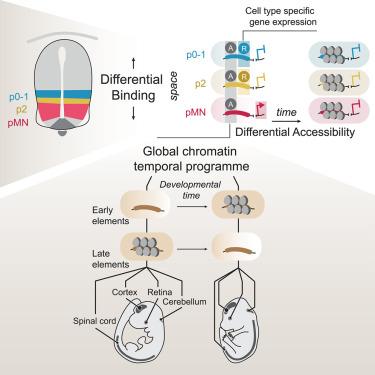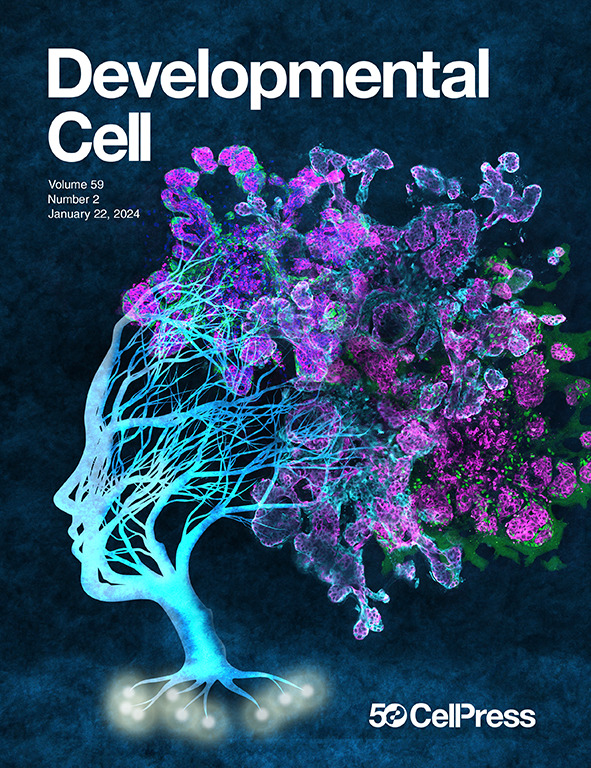脊椎动物神经管中整合时空模式的顺式调控逻辑
IF 8.7
1区 生物学
Q1 CELL BIOLOGY
引用次数: 0
摘要
脊椎动物神经管从一个小的祖细胞池中产生大量分子和功能不同的神经元和胶质细胞。虽然空间模式在组织细胞命运规范中的作用已被广泛研究,但控制细胞类型生成时间的时间模式同样重要。在这里,我们定义了一个在整个小鼠神经系统的祖细胞中运行的全局时间程序,该程序通过控制染色质的可及性来控制细胞命运的选择。这种顺式调控程序的扰动会影响神经祖细胞的顺序细胞命运转变及其后代的身份。时间程序与空间模式并行运行,确保空间决定因素的及时可用性,以指导细胞类型特异性基因表达。这些发现确定了一种时空整合策略,其中全球时间染色质程序决定了空间基因调控网络的输出,从而导致细胞类型身份的有序分配。本文章由计算机程序翻译,如有差异,请以英文原文为准。

The cis-regulatory logic integrating spatial and temporal patterning in the vertebrate neural tube
The vertebrate neural tube generates a large diversity of molecularly and functionally distinct neurons and glia from a small progenitor pool. While the role of spatial patterning in organizing cell fate specification has been extensively studied, temporal patterning, which controls the timing of cell type generation, is equally important. Here, we define a global temporal program operating in progenitors throughout the mouse nervous systems that governs cell fate choices by controlling chromatin accessibility. Perturbation of this cis-regulatory program affects sequential cell fate transitions in neural progenitors and the identity of their progeny. The temporal program operates in parallel to spatial patterning, ensuring the timely availability of regulatory elements for spatial determinants to direct cell-type-specific gene expression. These findings identify a chronotopic spatiotemporal integration strategy in which a global temporal chromatin program determines the output of a spatial gene regulatory network resulting in the ordered allocation of cell type identity.
求助全文
通过发布文献求助,成功后即可免费获取论文全文。
去求助
来源期刊

Developmental cell
生物-发育生物学
CiteScore
18.90
自引率
1.70%
发文量
203
审稿时长
3-6 weeks
期刊介绍:
Developmental Cell, established in 2001, is a comprehensive journal that explores a wide range of topics in cell and developmental biology. Our publication encompasses work across various disciplines within biology, with a particular emphasis on investigating the intersections between cell biology, developmental biology, and other related fields. Our primary objective is to present research conducted through a cell biological perspective, addressing the essential mechanisms governing cell function, cellular interactions, and responses to the environment. Moreover, we focus on understanding the collective behavior of cells, culminating in the formation of tissues, organs, and whole organisms, while also investigating the consequences of any malfunctions in these intricate processes.
 求助内容:
求助内容: 应助结果提醒方式:
应助结果提醒方式:


